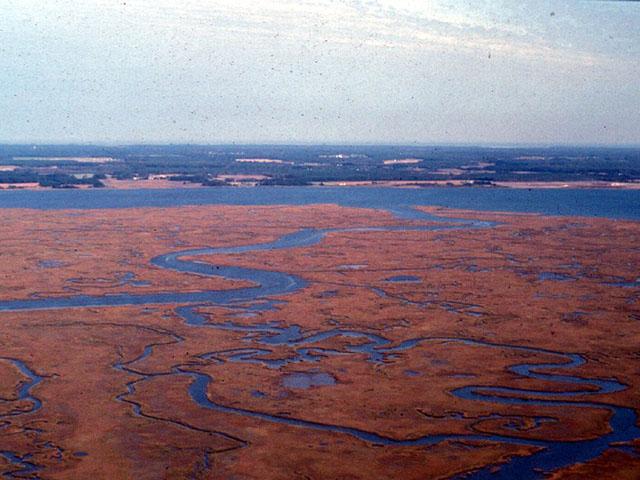EPA Challenged on Chesapeake Bay TMDL
Environmentalists, States Allege EPA Shouldn't Have Approved Plans for Two States
OMAHA (DTN) -- The EPA has failed in its legal responsibility to clean up the Chesapeake Bay, two new federal lawsuits filed on Thursday argue.
In particular, the lawsuits filed in the U.S. District Court for the District of Columbia by the Chesapeake Bay Foundation and the states of Maryland, Virginia and Delaware, along with the District of Columbia, argue EPA has failed to hold accountable the states of New York and Pennsylvania for not cutting nutrient runoff as part of the total maximum daily load, or TMDL, program for the bay.
In 2010, EPA issued a TMDL for the Chesapeake Bay and its tributaries with jurisdictions in the District of Columbia, Delaware, Maryland, New York, Pennsylvania, Virginia and West Virginia.
Those states adopted caps on discharges of nitrogen, phosphorous and sediment in the bay region. Each state was directed to issue watershed implementation plans in three phases, in 2010, 2012 and 2019. The plans were designed to attain water quality goals by 2025.
EPA is tasked to oversee and evaluate progress by each jurisdiction and to act to ensure plans are implemented.
Both lawsuits claim the EPA violated the Clean Water Act and the Administrative Procedure Act.
"The failure of the United States to comply with the Chesapeake Bay agreements and the Clean Water Act will lead to the continued degradation of water quality in the Chesapeake Bay," the Chesapeake Bay Foundation argued in its complaint.
In 2014, EPA and the states signed an agreement that requires all practices to be in place to reduce pollution in the bay.
The Chesapeake Bay Foundation, however, said the states of New York and Pennsylvania have come up short and haven't been pressed by EPA. Both states submitted updated plans to EPA in 2019.
"EPA approved these WIPs (TMDL plans) without significant change or changes to the bay TMDL, ensuring that bay water quality will not be restored by 2025," the foundation lawsuit said.
P[L1] D[0x0] M[300x250] OOP[F] ADUNIT[] T[]
"By approving these WIPs without changes sufficient to meet the bay agreement water quality goals by 2025 and without TMDL backstop measures, EPA has failed to comply with the agreed upon TMDL accountability framework and the Clean Water Act."
The lawsuit said Pennsylvania is responsible for 46% of the nitrogen, 26% of the phosphorus and 31% of the sediment load into the Chesapeake Bay.
"In its 2018 midpoint assessment, EPA identified Pennsylvania as the only jurisdiction that had shown a significant inability to meet its pollutant reduction goals for both the agriculture and urban stormwater sectors," the foundation lawsuit said.
Even though EPA has imposed so-called backstop measures by transferring pollution loads from one sector to another, the lawsuit said those measures were "ineffectual" as Pennsylvania did not meet its obligation.
"In fact, Pennsylvania's water pollution problem is getting worse, not better," the lawsuit said.
"The most recent assessment of the water quality of Pennsylvania's rivers and streams shows more than 25,800 miles of impaired waterways -- 5,500 more miles than were measured in 2016."
STATES, DISTRICT OF COLUMBIA SUIT
In a separate lawsuit filed on Thursday, the states said EPA's approval of New York's and Pennsylvania's TMDL plans were "arbitrary and capricious."
The government plaintiffs said EPA approved Pennsylvania's plan in 2019, although it was proposed to "achieve only 64% of the nitrogen reduction targets prescribed for Pennsylvania by the bay TMDL, and 76% of the phosphorus reduction targets prescribed for Pennsylvania by the bay TMDL."
When New York submitted its plan last year, EPA found it would achieve just 61% of nitrogen-reduction targets.
"Despite these clear deficiencies, EPA merely suggested 'potential enhancements'" to the plans, the lawsuit said.
"Even though EPA recognized that those submitted by Pennsylvania and New York remained significantly deficient, EPA did not require revision or resubmission."
Both lawsuits ask the court to vacate EPA's approval of the Pennsylvania and New York plans.
AG ATTEMPTS TO STOP TMDL
In 2016, EPA pollution controls in the Chesapeake Bay watershed were allowed to stand after the U.S. Supreme Court denied a review in an American Farm Bureau Federation legal challenge.
In November 2015, several major ag groups, led by the AFBF, asked the court to determine whether states or the federal government has authority under the Clean Water Act to implement and enforce specific nutrient standards.
There are thousands of nutrient standards in watersheds across the country, known as TMDLs. However, AFBF and other agriculture groups were concerned about the Chesapeake Bay TMDL because it encompasses several states and could be used as a model for similar efforts across the country.
In July 2015, the United States Court of Appeals for the Third District in Philadelphia ruled EPA was acting on its authority by implementing numeric standards to reduce the flow of nutrients from farms and other sources in the estuary that covers parts of New York, Pennsylvania, Delaware, Maryland, Virginia, West Virginia and the District of Columbia.
Farm Bureau originally sued in early 2011 and was joined by the National Chicken Council, the Fertilizer Institute, National Pork Producers Council, National Turkey Federation and National Corn Growers Association in the legal challenge.
Todd Neeley can be reached at todd.neeley@dtn.com
Follow him on Twitter @toddneeleyDTN
(c) Copyright 2020 DTN, LLC. All rights reserved.




